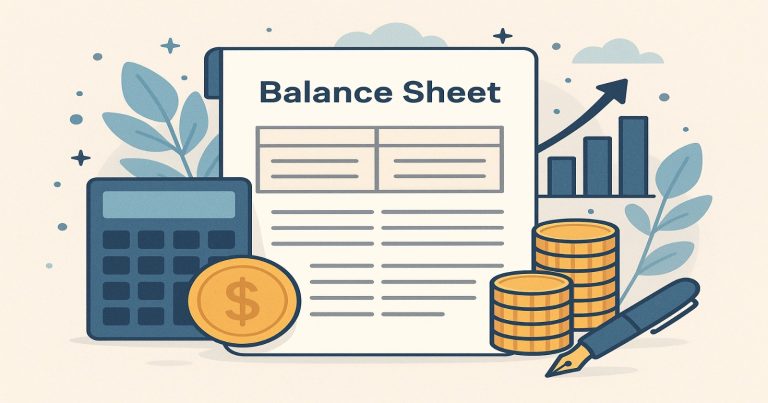A Balance Sheet is a fundamental financial statement used by companies to detail their financial position at a specific point in time. It encompasses all assets, liabilities, and shareholders’ equity, presenting a snapshot that helps stakeholders assess the company’s fiscal health and make informed decisions. In short, it is the financial statement that reports a company’s position regarding assets, liabilities, and shareholders’ equity at any specific moment. It forms part of a very useful tool used for basic analysis or calculating the financial ratios in the event of using it with other essential financial statements.
Features of Balance Sheet
A balance sheet offers several distinctive features that help both internal and external stakeholders understand the financial standing of a business:
- Clarity in Financial Position: It displays the company’s assets, liabilities, and equity, giving a transparent view of what the company owns and owes.
- Liquidity Analysis: By examining the balance sheet, one can assess how well a company can meet its short-term obligations with its current assets.
- Leverage Metrics: The balance sheet helps in determining the amount of debt used to finance the company’s assets, revealing the leverage level.
- Comparison with Previous Periods: Comparing balance sheets over time allows stakeholders to track financial progress, identify trends, and make strategic decisions.
These features make the balance sheet an indispensable tool in financial analysis and corporate management.
Importance of Balance Sheet
The balance sheet, therefore, is crucial in financial reporting and decision-making for several reasons:
- Credit Evaluation: Creditors use the balance sheet to judge the creditworthiness of a firm regarding its ability to pay its financial obligations in the future.
- Investment Decisions: An investor decides whether to buy or sell based on any financial statement, especially by analyzing the balance sheet to know the strength and profitability of a firm’s financial stability.
- Compliance with Other Regulatory Requirements: A company needs to prepare and issue balance sheets to meet the accounting standards as well as other requirements of the regulating authorities. It ensures that executives and management execute strategic planning, determine resource allocation, and evaluate performance using the balance sheet.
Knowing the importance of the balance sheet can guide stakeholders in making prudent financial and strategic decisions.
Purpose of the Balance Sheet
The balance sheet serves multiple purposes, each crucial to the stakeholders involved:
- Financial Reporting: It provides a formal record of the financial activities for the period.
- Performance Evaluation: Enables management to assess financial stability and operational efficiency.
- Future Forecasting: Helps predict future financial conditions and plan accordingly.
- Risk Management: Assists in identifying financial risks and taking measures to mitigate them.
The purpose of the balance sheet goes beyond mere accounting to inform strategic business management and investment decisions.
How to Prepare a Balance Sheet?
Preparing a balance sheet involves several key steps:
- Identify Date: Determine the specific date for which the balance sheet is being prepared.
- List Assets: Compile all assets, beginning with current assets like cash and inventories, followed by long-term assets such as equipment and real estate.
- List Liabilities: Enumerate all liabilities, starting with short-term obligations like accounts payable, followed by long-term liabilities including loans and bonds.
- Calculate Equity: Equity is the residual interest in the assets after deducting liabilities and includes common stock, retained earnings, and additional paid-in capital.
This systematic approach ensures that the balance sheet accurately reflects the financial position of the business as of the reporting date.
Balance Sheet Format
A typical balance sheet format comprises three main sections:
- Assets:
- Current Assets: Cash, accounts receivable, inventory
- Non-Current Assets: Property, plant, equipment
- Liabilities:
- Current Liabilities: Accounts payable, short-term loans
- Long-Term Liabilities: Bonds payable, long-term loans
- Shareholders’ Equity:
- Common stock
- Retained earnings
- Treasury stock
Consolidation of Balance Sheet
Reserves are part of an entity’s equity portion in the balance sheet. It is retained earnings that have not been issued as dividends but retained and held for re-investment or to strengthen the financial strength of the entity. Preparation of Consolidated Balance Sheets Consolidation of the financial statements of a parent company and its subsidiaries refers to the combination of their financial statements. Consider the following while preparing consolidated balance sheets:
- Eliminate Intercompany Transactions: Intercompany transactions of the group entities neutralize all the transactions between the entities to avoid double counting.
- Consolidation of Subsidiaries’ Assets and Liabilities: the subsidiaries’ assets and liabilities are included in the figures of the parent corporation.
- Minority Interests Adjustment: if the parent corporation doesn’t fully acquire a subsidiary, then minority interests need to be represented within the equity section. Such consolidation presents a clear and transparent view of the corporate group’s financial health rather than just specifics about the corporations.
Legal Reserves: Statutorily or compulsorily set aside, based on some form of legal requirement, such as for future liabilities because of a certain kind of event. - Revenue Reserves: Retained profits that can be reinvested in the business or be used to pay dividends in the future.
Only once the reserves are understood will one be able to assess how strong the company is for sustainable long-term operation and development.
How to Prepare Consolidated Balance Sheet?
Preparing a consolidated balance sheet requires meticulous attention to detail and adherence to accounting standards:
- Identify the Entities: Determine all subsidiaries to be included in the consolidation.
- Adjust for Fair Value: Reassess the assets and liabilities of subsidiaries to reflect their current market values.
- Eliminate Intercompany Balances: Remove any balances that result from transactions among the group’s companies.
- Recognize Minority Interests: Accurately represent the equity interest of non-controlling shareholders.
This process ensures that the consolidated balance sheet accurately reflects the total assets, liabilities, and equity of the parent and its subsidiaries.
Balance Sheet FAQs
1. What is a Reserve in Balance Sheet?
Reserves are part of shareholders’ equity, representing earnings retained by the company for future investment, legal requirements, or other specific purposes.
2. How important is Consolidation of Balance Sheet for a multinational company?
It’s crucial as it provides a complete financial picture by combining the financial data of a parent company and its subsidiaries, essential for regulatory compliance and strategic decision-making.
3. What is the main Purpose of the Balance Sheet?
The main purpose is to provide a detailed snapshot of a company’s financial condition at a specific point in time, including its assets, liabilities, and shareholders’ equity.
4. What does How to Prepare Consolidated Balance Sheet involve?
It involves identifying all subsidiaries, adjusting for fair value, eliminating intercompany balances, and recognizing minority interests to reflect the true financial state of the entire corporate group.
5. Why is Balance Sheet Format important?
A standardized format helps in consistent financial reporting, analysis, and comparison across different periods and entities, making it easier for stakeholders to understand and use the information effectively.


